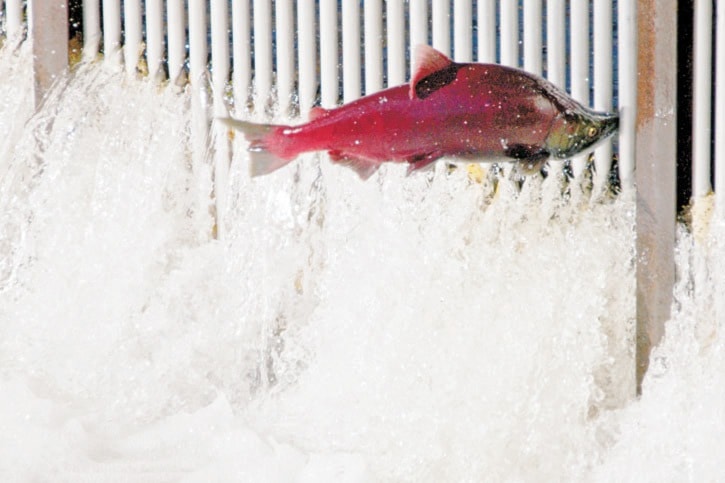A scientist leading a study into how sea lice infect wild B.C. salmon says he is hopeful that a project co-funded by fish farmers and NGOs can overcome the "your data versus my data" battles that so often cloud the issue.
Dr. Crawford Revie, an epidemiologist at the University of Prince Edward Island, said the Broughton Archipelago Monitoring Plan (BAMP) is the only sea lice study that brings together B.C. fish farmers and environmental groups.
As a research scientist, Dr. Revie said heading the project has been a bit of a challenge.
"I'm not really a diplomat," he said, laughing. "I probably spend nearly half my time making sure that nobody's feathers are ruffled too much."
Over five years, BAMP researchers will track how many pink and chum salmon get infected by sea lice as they migrate through the Broughton Archipelago—an island group in the Haida Gwaii that is home to 15 salmon farms. Four times a year, the researchers drop seine nets at about 100 sites in the island chain and observe how infected salmon are in each catch.
The project is co-funded by three of B.C.'s largest farmed salmon producers and the Coastal Alliance for Aquaculture Reform—a group of four environmental organizations that includes the David Suzuki Foundation.
"Ultimately, I hope it leads to light as well as heat," said Dr. Revie.
Fish farming has been a heated, bumper-sticker issue in B.C. for more than a decade.
In 2007, a research paper published in Science concluded that 99 per cent of the pink salmon in northern B.C. waters will go extinct if sea lice outbreaks continue. Other studies have refuted such findings, concluding that the real threat lies in ocean conditions.
Dr. Revie is a veteran of fish-farming debates in other countries with active salmon fisheries.
The controversy came up in his native Scotland, although he said it never got so heated there as it has here in B.C.
"Our wild stocks are not nearly as vibrant, unfortunately, as they still are in British Columbia," he explained.
In Norway, where salmon stocks are stronger, Dr. Revie said the controversy was closer to the B.C. experience.
More than the research, Dr. Revie said the hardest work on the sea lice issue is to actually have both sides sit down and hear what the other is saying.
"I think it's worth it," he said. "Hopefully we'll eventually get to better solutions rather than constantly having debates."
Preliminary data from the 2011 BAMP studies have been posted at www.bamp.ca. The first paper from the project is expected to be published sometime in 2012.
